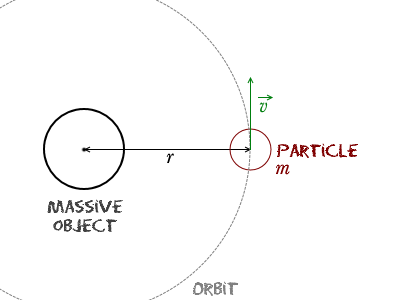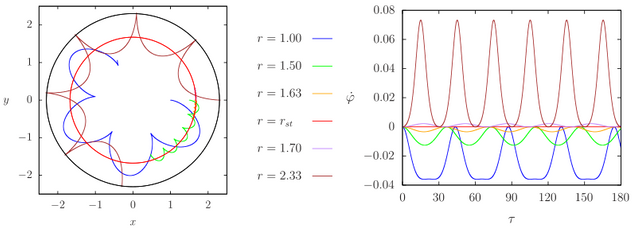How can a particle remain static in a rotating space-time?

Illustration CC0, Pixabay
This is a translated version of my french post. So if you want to read my original post in French, it's available here.
Predominantly, a massive rotating object attracts the surrounding space-time.
A counter-intuitive reality
German researchers at Oldenburg University in Germany recently proved that a particle could remain motionless while space-time was rotating.
The comments reported to Phys seem counter-intuitive. Although general relativity has been almost ubiquitous for over 100 years, it never ceases to amaze.
Exploring the ways in which energy distributions distort space and time is one of the keys to a better understanding of the world.
Two conditions are sine qua non for a particle to remain static with respect to an observer located in a rotating space-time:
- The angular moment of the particle (mainly its rotation) must be of the right value to cancel the rotation generated by the attraction,
- The particle must be in a static orbit, without being attracted or repelled.
An angular moment is related to the speed of the object and the distance from the center of its rotation. According to the law of energy conservation, it never varies even if the orbit is elliptical, never destroyed nor created.

Fig 2. Simplified scheme to understand the angular moment. Here, the moment L can be obtained like that: L = mvr with m the mass of the particle, v its speed and r the radius between the massive object (like a black hole)
A static orbit is obtained when the rotating space-time metric has a local minimum, the local minimum corresponding to the location of said orbit.
The particle found there is then "trapped" there.
Several objects allow the appearance of a static orbit:
- A boson star (theoretical star composed of bosons, where classical stars are composed of fermions),
- A wormhole (hypothetical object that would connect two separate sheets or two separate regions of space-time and would manifest, on one side, as a black hole and, on the other side, as a white hole.).
It is important to note that some objects do not have a static orbit due to the absence of a local minimum such as Kerr type black holes.
Can we see a possible facilitation there of the distinction of celestial objects?

Fig. 1 ; Some more optional details: massive particle orbits released from rest at different values of the radial coordinate r (and φ = 0) and their evolution in a time interval t.
The closer the starting point r is to the static ring rst, the smaller the amplitude φ is.
The maximum of the scalar field is indicated by the black circle (Via Collodel, et al., 2018).
Despite the relative immensity of the universe, the probability of detecting a particle with and angular moment of the right value and the right position is almost nil.
However, particles with the right moment near the local minimum move more slowly than other surrounding particles.
This is what we will call here, a ring.
The detection of this type of ring could therefore indicate the presence of a static orbit and therefore differentiate a kerr black hole from another black hole or a boson star.
The study published in Physical Review Letters (DOI : 10.1103/PhysRevLett.120.201103) will therefore improve the interpretation of future observations.
It will also be possible to state with more or less certainty that an active galactic nucleus (AGN) is not a Kerr black hole.
References
Collodel, et al., Static Orbits in Rotating Spacetimes. Physical review letters. 2018.
Angular moment: https://fr.wikipedia.org/wiki/Moment_cinétique
Wormhole: https://fr.wikipedia.org/wiki/Trou_de_ver
Fig 1: [Collodel, et al., 2018](https://journals.aps.org/prl/abstract/10.1103/PhysRevLett.120.201103)
Fig 2: Own draw, CC BY-SA Clément Poiret, made with love <3
Going further
Original paper (open access on arXiv).
You can read more about angular moments related to astronomy here.
flat earth.
Of course not! We are living on a Turtle, get out of your cave :D